Best point-and-shoot camera 2024: top picks for simple shooting
The best point and shoot cameras for phone-beating snaps
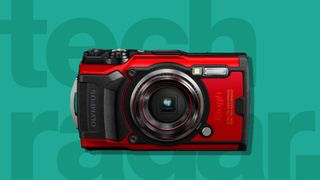
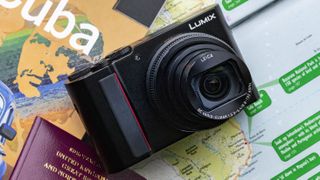
1. The list in brief
2. Best overall
3. Best rugged
4. Best premium
5. Best instant
6. Best bridge camera
7. Best for video
8. Best compact super-zoom
9. Best for Canon fans
10. Best for action
11. Best for hobbyists
12. How to choose
13. How we test
The best point-and-shoot cameras offer something that you still don't get with the best camera phones in 2024, such as a huge optical zoom, premium build quality and better user experience.
Our number one point-and-shoot camera, the Panasonic Lumix TZ200, offers 15x optical zoom and features in our best cameras for beginners too. The best bridge cameras, like the Sony RX10 IV, provide even more zoom capabilities but these are, more often than not, also pricier.
Other than zoom, you might be in the market for a point-and-shoot camera because you want a waterproof camera like the Olympus Tough TG-7. Or, if you want to capture video in scenarios where you don't want to risk damaging your phone, take a look at the GoPro Hero 12 Black action camera. Alternatively, if you just want to get up and running as quickly as possible then the Polaroid Now+ is a fantastic instant camera, as are any of our best cameras for kids.
We've reviewed all of the cameras in this buying guide to make sure you've got all the best hands on information to compare the options. Alongside links for the most up-to-date prices, each camera has been categorized to help you see the key strength for each product.

Tim is TechRadar's Cameras editor, with over 15 years in the photo video industry and most of those in the world of tech journalism, Tim has developed a deeply technical knowledge and practical experience with all things camera related. The point-and-shoot camera market has been decimated by the rise of smartphones, but in 2024 is making somewhat of a comeback with models like the Nikon Coolpix S6900 trending.
The quick list
If you want a shortcut to the best point-and-shoot cameras, our quick summary below will give you an overview of the top options for every budget. When you find one that fits the bill, use the links beneath to jump down to our full write-up.

Best overall
One of the best all-in-one cameras that delivers incredible zoom range and great image quality, all in a compact body.
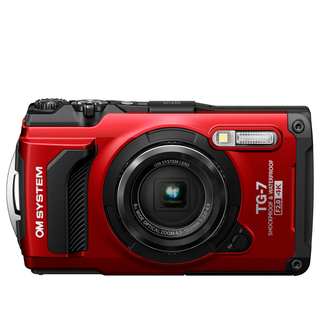
Best rugged
A great compact camera that can be taken anywhere you want without fearing it'll get damaged. It is also a great choice for beginners.

Best premium
High image quality, detailed 4K videos and a respectable autofocus system all come with an equally high price tag.

Best instant
Get your photos instantly with this super-fun camera that opens up a world of creative possibilities. Also a great camera for kids.
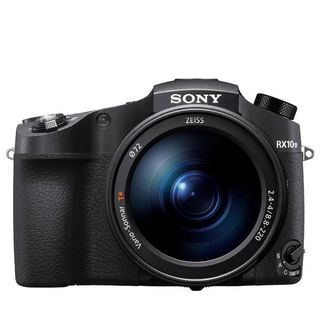
Best bridge camera
A camera that goes beyond a simple point-and-shoot thanks to its fast 24-600mm lens. For those who want more from their compact camera.
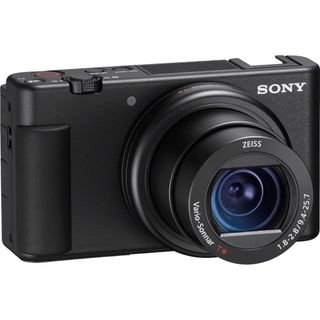
Best video
A capable lens, amazing autofocus and a side-flipping screen make this the perfect solution for vloggers who need a compact solution.
Load the next 4 products...
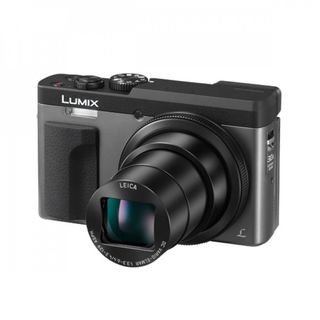
Best compact super-zoom
A 24-720mm f/3.3-6.4 zoom lens provides a huge zoom range with a more than respectable f-stop range.
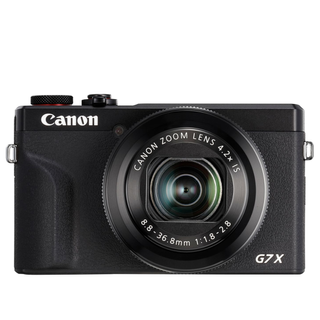
Best for Canon fans
With a market saturated by the likes of Sony and Panasonic, this Canon option boasts a fantastic lens and a range of specific features for videographers.
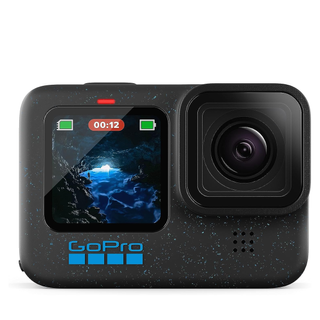
Best action
It doesn't get more simple in terms of point-and-shoot than this action camera, which includes amazing image stabilization and 1-bit log footage.
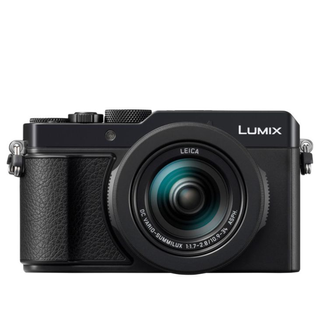
Best for hobbyists
Point-and-shoot photographers who want enjoy the process of capturing the world around them can do no better than the Lumix LX100 II.
The best point-and-shoot cameras in 2024
Why you can trust TechRadar
Below you'll find full write-ups for each of the best point-and-shoot cameras in our list. We've tested each one comprehensively, so you can be sure that our recommendations can be trusted.
The best point and shoot camera overall

Specifications
Reasons to buy
Reasons to avoid
Our Panasonic Lumix ZS200/TZ200 review describes this compact as "the most advanced travel zoom camera you can buy", and that's still the case. What sets the ZS200/TZ200 apart from other travel-zooms is that it has a large 1-inch sensor – that's around four times the size of a typical 1/2.3-inch chip used in most of the other cameras in this list, and larger than many smartphones.
That sensor size can be found in other compacts, but not in ones with such a long-reaching lens as the 15x optical zoom unit here, which gives you a very useful 24-360mm reach. Being a Panasonic camera, the ZS200/TZ200 is also crammed full of excellent features; a 3-inch touchscreen, 2.3 million-dot EVF and 4K video recording up to 30fps.
The drawback? Well, of course, you do pay for all of this power. If this model is a bit too pricey for you, look out for deals on its ZS100/TZ100 predecessor. But for a point-and-shoot all-rounder with good image quality, you still can't do better than this without spending megabucks on the Sony RX100 VII (see number three below).
- Read our in-depth Panasonic Lumix ZS200 / TZ200 review
The best rugged point and shoot camera

Specifications
Reasons to buy
Reasons to avoid
The OM System Tough TG-7 is exactly what you want in terms of a point-and-shoot. Take it on your travels, throw it in your bag, and even give it to your kids. Wherever you take it and whatever you do with it, you can rest assured that it'll withstand all the knocks and scrapes along the way. As well as being rugged, the Tough TG-7 is also waterproof with an IPX8 rating, making it perfect not only for rainy days but also for submerging up to 15m underwater.
The camera has a 1/2.3-inch BSI CMOS sensor, which produces 12MP images. Video resolution goes up to 4K at 30 fps, and if you want slow motion, you have the option of 60 fps at 1080p. Even though this camera can't deliver sharp, cinematic video, you'll still be guaranteed fair-quality, usable footage. Even though some smartphones have better optics, the Tough TG-7 does a unique job of breaking down the barrier between you and nature, encouraging you to get out and about more than ever.
- Read our in-depth OM System Tough TG-7 review
The best premium point and shoot camera
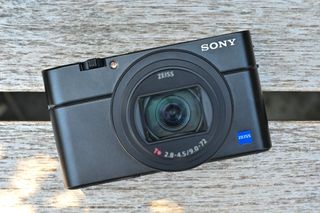
Specifications
Reasons to buy
Reasons to avoid
Sony's RX100 series has long been the pinnacle of premium compact cameras and the RX100 VII is the series' high water-mark. It's practically bursting with features, but the key one for its point-and-shoot usability is its class-leading autofocus. This means it can reliably track moving subjects like speeding pets or lock onto people with its Face/Eye AF mode, which means you can simply focus on composition.
The RX100 VII is also a pretty dab hand at video too, offering detailed 4K footage with minimal rolling shutter and handy features like a microphone jack. Aside from its price tag, we found that this camera's only real downsides are its lack of touchscreen functionality and a fairly average battery life. Some may also prefer the handling and shooting experience of the Canon PowerShot G7X Mark III (see no.7 below). But otherwise this is the best money-no-object compact camera around.
- Read our in-depth Sony RX100 VII review
The best instant point and shoot camera
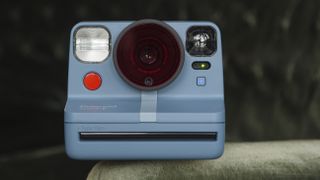
Specifications
Reasons to buy
Reasons to avoid
Instant cameras are some of the most affordable point-and-shoots around – and we think the Polaroid Now+ is the most user-friendly model you can buy. This is largely thanks to its built-in autofocus, which we found to be mostly reliable in our tests and reduce your number of throwaway shots. But unusually for an instant camera, the Now+ also has built-in Bluetooth and a companion smartphone app, which brings some extra creative shooting modes that lift it beyond its rivals.
If you don't need this extra versatility, which lets you dabble with double exposures and manual shooting, then the standard Polaroid Now is also worth considering. It's also worth bearing in mind that the cost of this camera's Polaroid I-Type film can add up. But the flipside is that you get good-sized prints from a super-versatile instant camera that we think is also the best point-and-shoot of its kind.
- Read our in-depth Polaroid Now+ review
The best point and shoot bridge camera

Specifications
Reasons to buy
Reasons to avoid
The Sony RX10 IV is still one of the most versatile and capable cameras around, and redefined what we could expect from a point-and-shoot camera. We can't quite squeeze its plethora of top-line features into this short summary, but here goes. It's a weather-sealed bridge camera packing a 25x optical zoom with 24-600mm coverage, supported by excellent stabilization and the larger-type 1-inch sensor, so images look great at any setting.
For photography, you can shoot up to 24fps with continuous metering and class-leading continuous AF – and that's in raw mode, too, which allows you to retain information that you can play with in editing software afterwards. Video-wise, 4K UHD shooting is included, plus a range of slow motion modes up to an astonishing 1000fps, although the latter naturally comes with reduced image quality. There's a mic input and a headphone jack, while the touchscreen and EVF both look great, too.
- Read our in-depth Sony RX10 Mark IV review
The best point and shoot camera for video

Specifications
Reasons to buy
Reasons to avoid
Looking to mostly shoot video rather than stills? The Sony ZV-1 is the best compact point-and-shoot you can buy. Effectively a video-focused version of Sony's RX100 series (see no.3 above), this camera has been designed for vloggers and YouTubers who want something small and simple-to-use. In our tests, its autofocus did an excellent job of keeping faces and moving subjects in focus, with its Product Showcase mode particularly handy for YouTubers who regularly do product reviews.
We also found the video quality from the ZV-1's 20.1MP 1-inch sensor to be very impressive, as long as you shoot in good light, and this is backed up by a 3.5mm mic port for boosting audio quality, too. While it is also a capable stills camera, the ZV-1's bright 24-70mm f/1.8-2.8 lens doesn't give you quite the same reach as the RX100 VII, so photographers should lean towards that model. But if you need something compact and affordable that'll still give you natural background blur in both stills and photos, the ZV-1 should be top of your shortlist.
- Read our in-depth Sony ZV-1 review
The best point and shoot camera for compact super zoom

Specifications
Reasons to buy
Reasons to avoid
Pioneers of the 'travel-zoom' type of point-and-shoot camera, Panasonic brought us the smallest camera with 10x optical zoom back in 2006. Of course, the tech has moved on and we now have a 30x optical zoom with 24-720mm focal range, supported by a five-axis image stabilization that we have found to be very effective. There are similar cameras with bigger zooms, but in our tests we found the TZ90 offers the most well-rounded package.
Key features include the lovely 3-inch touchscreen that tilts up for an intuitive selfie mode. Unlike many models in this list, you also get a 0.2-inch viewfinder. It's on the small side and you'll err towards the lovely touchscreen instead, but most other cameras at this level (and of course smartphones) simply don't have a viewfinder at all, so the option is very welcome.
Like the Canon SX740 HS, there's a 1/2.3-inch sensor with 20.3MP and a 10fps continuous shooting mode. But the TZ90 can also shoot in raw format and offers in-camera raw editing, too. With impressive 4K video quality too, the ZS70/TZ90 offers excellent value for money.
- Read our in-depth Panasonic Lumix TZ90/ZS70 review
The best point and shoot camera for Canon fans
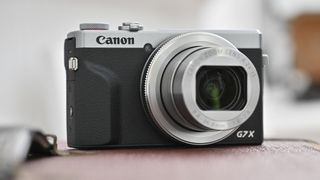
Specifications
Reasons to buy
Reasons to avoid
PowerShot is Canon's sub-brand for its point-and-shoot camera range and, alongside the pricier Canon PowerShot G5 X Mark II, this is its best one yet. Both cameras have 1-inch 20MP sensors and touch-sensitive flip-screens, with the main difference between the two (other than price) being the lack of an electronic viewfinder on the G7 X Mark III. For point-and-shoot fans, this setup should be fine, but the G5 X Mark II is another fine option if you do need that viewfinder.
The G7 X III does also have a few other video-related tricks up its sleeve that you don't find on its more expensive sibling. The main one is the ability to livestream directly to YouTube, but it also has a microphone input for improved audio quality. The AF system may be slightly dated and not quite up to Sony's RX100 series, but but otherwise the G7 X III is still a fine, video-focused compact with excellent image stabilization.
- Read our in-depth Canon PowerShot G7X Mark III review
The best point and shoot camera for action
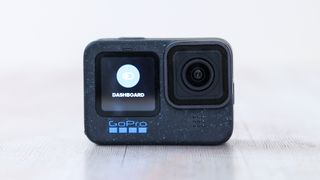
Specifications
Reasons to buy
Reasons to avoid
The GoPro Hero 12 Black isn't your typical point-and-shoot camera, but that doesn't mean it's not a great option for simple, compact shooting. It's an industry-leading action camera with superb 5.3K videocapabilities and 27MP photos. It might not provide the best image quality in low light, but it features a HDR video mode to capture more detail in challenging lighting is required. If the lighting conditions are okay, then the results are pretty super-impressive. Our full review found the footage to be more crisp and less subdued, especially compared to DJI action cameras.
The fact that the camera includes an amazing level of image stabilization and versatile mounting options means you can capture footage in almost any scenario. Crop ratios of 16:9, 9:16, and 8:7 make it a very versatile camera, especially if you want to create content that can be posted directly onto social media platforms that adopt portrait formats.
- Read our in-depth GoPro Hero 12 Black review
The best point and shoot camera for hobbyists

Specifications
Reasons to buy
Reasons to avoid
If you consider yourself to be a hobbyist photographer and are looking for a tiny but capable point-and-shoot, then the Panasonic Lumix LX100 II should definitely be on your shortlist. Its USP is its large sensor size. It's the same Micro Four Thirds sensor format as used in the company's 'Lumix G' mirrorless cameras, being almost twice the size of the 1-inch sensor found in other high-end point-and-shoot cameras in this round up.
Squeezed into this impressively compact body is a 24-75mm f/1.7-2.8 lens. That's only a 3.1x optical zoom, but the lens aperture is very fast, letting in more light and providing greater control over depth of field. In other words, you can blur those backgrounds more easily. While smartphones rely on image processing for blurred-background portraits, it's all real here.
The viewing experience is good, with a high-quality 2.76-million dot EVF, though sadly the rear touchscreen is fixed. We'd love a tilt function for waist-level viewing, especially when out-and-about doing reportage photography. All in all, every choice from design to features makes the LX100 II ideal for photography enthusiasts, and it's all found in an impressively compact package.
- Read our in-depth Panasonic Lumix LX100 II review
How to choose the best point and shoot camera
Which brand of point-and-shoot is the best?
Traditionally, the best point-and-shoot camera brands have been Panasonic, Sony, and Canon. And while all three have largely stopped making budget models due to the rise of smartphones, they collectively make the best user-friendly, pocketable cameras you can buy (outside of the phone world).
This is reflected in our list above. What Lumix, Cyber-shot and Powershot cameras lack in computational photography skills, they more than compensate for with high-quality optics, large sensors, handling and, in some cases, impressive zooms. Sony, Panasonic and Canon also make the best bridge cameras around.
If you have a more specialist need, like a super-rugged cameras for stills or video, that's when other brands come into play. Olympus (now OM System) has great heritage with its Tough series, currently topped by the TG-6. And GoPro continues to be the best point-and-shoot experience around for video creators who need some rugged and waterproof for outdoor adventures.
What is the biggest drawback of point-and-shoot cameras?
Nearly all point-and-shoot cameras were made in a time before the rise of smartphone computational photography, which really started taking off with the Google Pixel 4 in 2019. This kind of image processing, which involves intelligently combining multiple frames, was fueled by super-powerful mobile chipsets that simply aren't available to the traditional camera brands, whose heritage is instead in hardware and lens design.
This means that the biggest drawback of point-and-shoot cameras, compared to phones, is their lack of in-camera processing. The photos they produce are often more natural as a result, lacking the saturated or hyper-real HDR look that some phones tend to prefer by default. But point-and-shoot cameras can also struggle to match the balanced shots that phones manage when they effectively stack multiple exposures of the same scene.
You can achieve similar effects yourself by shooting in raw and editing the images later using software like Photoshop or Snapseed, but this is less of a point-and-shoot experience. This means that point-and-shoot cameras often fair worse than smartphones in challenging lighting conditions, but can still outshine them when you play to their strengths (for example, when using optical zoom on distant subjects, or a bright lens to produce natural bokeh).

How we test point and shoot cameras
Real-world tests are the most revealing way to get under the skin of the best point-and-shoot cameras. So alongside with standardized tests for factors like ISO performance, we take every camera we test for a spin to see how it fares in real-world scenarios.
We'll use it both handheld and, if possible, on a tripod to get a sense of where its strengths lie, and test its startup speed. We also use a formatted SD card and shoot in both raw and JPEG (if available), testing its burst shooting and buffer performance.
For autofocusing, we use the different autofocus modes on hand in single point, area, and continuous modes. Naturally, we take a look at how accurate and reliable its metering is, how well it handles noise, and how well it minimizes things like fringing and distortion. Its video shooting skills are tested as well by shooting some test footage at different frame-rates and resolutions.

We also look at the camera's design, handling, and user interface while getting a sense of what kind of photographer it's most ideal for. Battery life is tested as well over the course of the day with the screen set to the default settings. Once the battery has reached zero, we'll then count the number of shots to see how it compares to the camera's CIPA rating.
Once all is said and done, we take all our data and everything we've learned about the point-and-shoot camera and compare it to its price tag to see if it offers great value for your money.
Get daily insight, inspiration and deals in your inbox
Get the hottest deals available in your inbox plus news, reviews, opinion, analysis and more from the TechRadar team.

Tim is the Cameras editor at TechRadar. He has enjoyed more than 15 years in the photo video industry with most of those in the world of tech journalism. During his time as Deputy Technical Editor with Amateur Photographer, as a freelancer and consequently editor at Tech Radar, Tim has developed a deeply technical knowledge and practical experience with cameras, educating others through news, reviews and features. He’s also worked in video production for Studio 44 with clients including Canon, and volunteers his spare time to consult a non-profit, diverse stories team based in Nairobi. Tim is curious, a keen creative, avid footballer and runner, and moderate flat white drinker who has lived in Kenya and believes we have much to enjoy and learn from each other.
- Mark WilsonSenior news editor
- Paul HattonFreelance writer
- Rhys WoodHardware Editor
